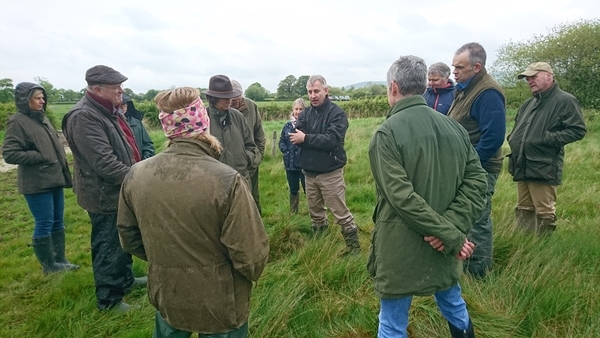
ECOLOGICAL aspirations can be extremely challenging for dairy farmers but increasing the songbird population alongside profitable farming is achievable, according to the Game & Wildlife Conservation Trust (GWCT) Wales.
Hosting a seminar on soils and biodiversity at Ty Newydd farm near Trefnant, St Asaph, on May 9th, Antony Griffith has always been passionate about creating wildlife habitats alongside his dairy operation, believing that both can work well together with a little more thought.
“Simplicity is key if we want greater participation by Welsh farmers in future schemes, but it needs to be much less daunting than what the Welsh agri-environment scheme has offered,” said Ant, pushing the need for future schemes to be fully inclusive, well supported and adaptive to get the best out of each farm.
Alastair Leake, who heads up the 800-acre GWCT Allerton Project demonstration farm in Loddington, Leicestershire, insists that farmers can deliver solutions in addressing biodiversity declines by allowing them to decide what they would like to see on their own farms.
“A very different approach from the past, but it really should be left to each farm to say what they would like to see and what makes the best sense on their holding.
“Over the past 26 years, we have learned a great deal about habitats, winter feeding and predator control. We have demonstrated that by using this approach we can maintain farm profitability and double the songbird population too, which adds weight to the debate that farming, and conservation can go hand-in-hand if done correctly.
“We have helped develop the ideal wild bird seed mix which can be used to manage the less productive parts of farms which is hugely beneficial for farmland birds but needs managing professionally.”
GWCT head of lowland gamebird research Rufus Sage spoke about the tremendous value of cover crops in grass dominated landscapes, especially mixes containing kale and quinoa to help birds through the winter months.
Research has shown that providing over winter habitats leads to more breeding birds and each farm needs to decide where best to deploy these winter crops.
Scottish lowland research ecologist Dave Parish concluded the talk by stressing the need for supplementary feeding through the hungry gap that works very well without making it complicated.
Notes to editors
The Game & Wildlife Conservation Trust – providing research-led conservation for a thriving countryside. The GWCT is an independent wildlife conservation charity which has carried out scientific research into Britain’s game and wildlife since the 1930s. We advise farmers and landowners on improving wildlife habitats. We employ more than 60 post-doctoral scientists and other research staff with expertise in areas such as birds, insects, mammals, farming, fish and statistics. We undertake our own research as well as projects funded by contract and grant-aid from government and private bodies.
For information, contact:
Eleanor Williams
Telephone: 07592 025476
Email: press@gwct.org.uk